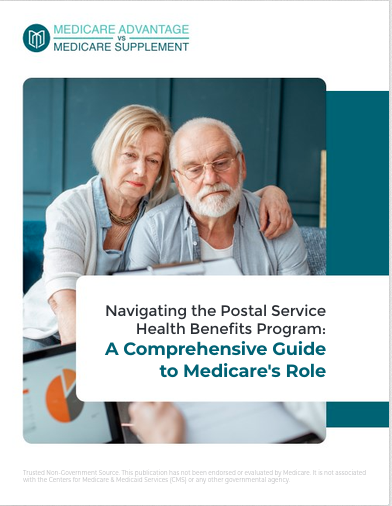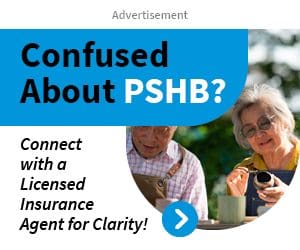Key Takeaways:
-
Medicare mail can be overwhelming, but understanding how to filter, organize, and prioritize it will help you stay informed without feeling lost.
-
Learning what to keep, what to toss, and when to take action ensures you never miss an important deadline or opportunity.
Making Sense of Medicare Mail Without Drowning in Paperwork
If you’re new to Medicare or have been enrolled for years, you know the endless stream of mail never seems to stop. From plan advertisements to official Medicare notices, your mailbox can quickly become a cluttered mess. But don’t worry—there’s a way to cut through the confusion and only focus on what actually matters. Let’s break down the different types of Medicare mail, what you should do with them, and how to keep from feeling overwhelmed.
Why Does Medicare Mail Keep Piling Up?
The sheer volume of Medicare-related mail can feel like a full-time job to manage. You’re not imagining things—there are multiple sources sending you information, and each has a different purpose. Understanding why you receive so much can help you make better sense of it.
-
Official Medicare Notices – Sent by Medicare, Social Security, or CMS with updates, coverage notices, and enrollment details.
-
Plan Materials – If you’re enrolled in a Medicare Advantage, Part D, or Supplement plan, you’ll receive policy updates, benefit explanations, and billing details.
-
Annual Notice of Change (ANOC) – Arrives every fall to inform you about any plan changes for the next year.
-
Marketing Mail from Private Insurers – Insurance companies send out a flood of advertisements, even if you’re not interested.
-
Scam or Misleading Mail – Not everything in your pile is legitimate; some senders use official-looking envelopes to trick you into buying something you don’t need.
What You Need to Keep and What You Can Toss
Not every Medicare-related letter or brochure is worth holding onto. Learning to sort mail as soon as it arrives will keep your space (and mind) clutter-free.
Documents to Keep:
-
Medicare card – This is essential for receiving healthcare services.
-
Annual Notice of Change (ANOC) – If you’re in a Medicare Advantage or Part D plan, this outlines any changes for the upcoming year.
-
Explanation of Benefits (EOB) – A breakdown of what Medicare and your plan have paid and what you owe.
-
Premium Bills – Keep track of these to avoid missing payments.
-
Enrollment Confirmation Notices – Important for verifying your coverage and eligibility.
Documents You Can Toss:
-
Duplicate plan advertisements – If you’ve already reviewed options, there’s no need to keep repeating sales materials.
-
Outdated coverage details – Once new plan documents arrive, old ones are unnecessary.
-
Unsolicited plan offers – If you’re not actively searching for a new plan, these are just clutter.
Organizing Medicare Mail the Smart Way
Even after sorting, keeping track of the paperwork you do need is essential. A simple system can prevent frustration later.
Step 1: Set Up a Filing System
-
Use folders or binders labeled by category: Medicare, Plan Benefits, Payments, and Correspondence.
-
Keep digital copies if you prefer an electronic system.
Step 2: Keep a Calendar for Deadlines
-
Mark key dates for open enrollment, premium payments, and required document submissions.
-
Set reminders so you don’t accidentally miss important deadlines.
Step 3: Opt for Paperless Statements
-
Many Medicare-related documents can be accessed online, reducing mail clutter.
-
Securely store login credentials for easy access.
How to Identify and Avoid Misleading or Scam Mail
Unfortunately, not all mail related to Medicare is legitimate. Some companies use aggressive marketing tactics, and others try to scam you. Knowing the warning signs can save you from falling for misleading offers.
Red Flags to Watch For:
-
Envelopes that look official but aren’t from Medicare.gov or Social Security.
-
Claims that you must “act now” or risk losing benefits.
-
Requests for personal information such as your Medicare number or Social Security number.
-
Promises of extra benefits that sound too good to be true.
If you ever receive suspicious mail, check directly with Medicare by calling 1-800-MEDICARE or visiting Medicare.gov.
What to Do During Medicare Open Enrollment Season
One of the biggest times for Medicare-related mail is Open Enrollment (October 15 – December 7). During this period, you’ll receive important notices, but also a flood of sales pitches. Staying focused on what actually matters will help you make the best decision for your healthcare coverage.
Key Mail to Watch For During Open Enrollment:
-
Annual Notice of Change (ANOC) – Summarizes changes to your current plan for the upcoming year.
-
Evidence of Coverage (EOC) – Outlines what your plan covers and what it doesn’t.
-
Enrollment Confirmation Notices – If you make a change, you’ll receive confirmation from Medicare or your plan provider.
How to Handle the Open Enrollment Mail Flood:
-
Read official notices carefully and compare them to your current plan needs.
-
Ignore unsolicited advertisements unless you’re actively looking for new coverage.
-
Contact Medicare directly for plan information instead of relying on mailed advertisements.
Simplify Your Medicare Mail Routine
Reducing mail clutter and confusion doesn’t have to be difficult. Here’s a quick recap of how to take control:
-
Sort Immediately – Separate important documents from junk mail as soon as it arrives.
-
Know What to Keep – Hold onto essential documents like EOBs, ANOCs, and premium statements.
-
Use a Filing System – Keep records organized so you can access them easily when needed.
-
Be Cautious – Verify that anything asking for personal information is legitimate.
-
Switch to Paperless Where Possible – Reducing physical mail can simplify record-keeping.
By taking these simple steps, you can stay on top of your Medicare mail and avoid feeling overwhelmed.
Keep Your Medicare Mail Under Control with the Right Help
Sorting through piles of Medicare mail doesn’t have to be a struggle. With the right system in place, you can focus on what matters while avoiding unnecessary stress. If you ever feel unsure about any mail you receive, a Medicare professional can help you understand your options and ensure you’re making the right choices for your healthcare needs. To find a trusted professional, check out the listings on this website and get the assistance you need.










